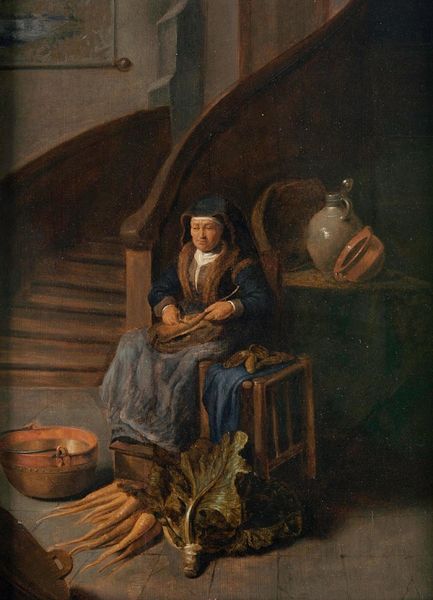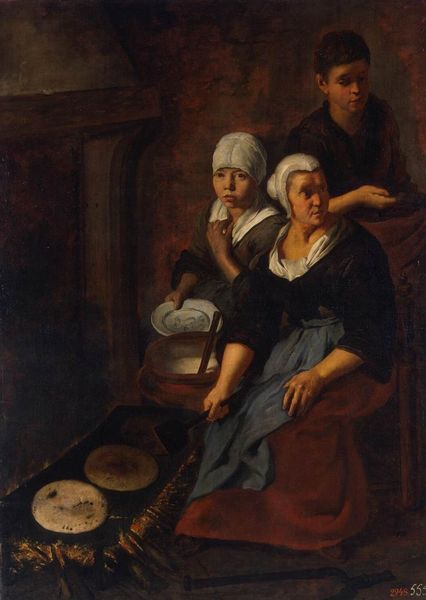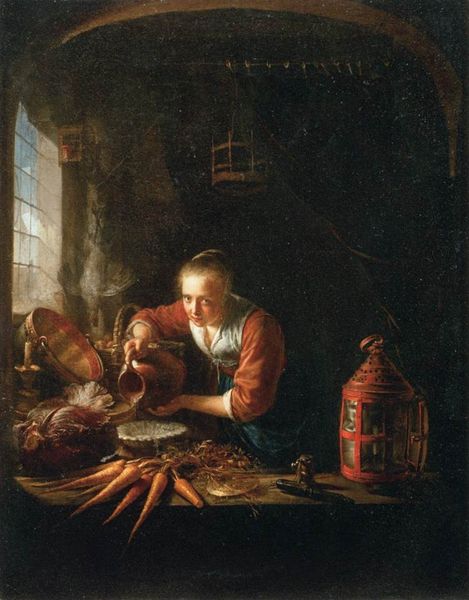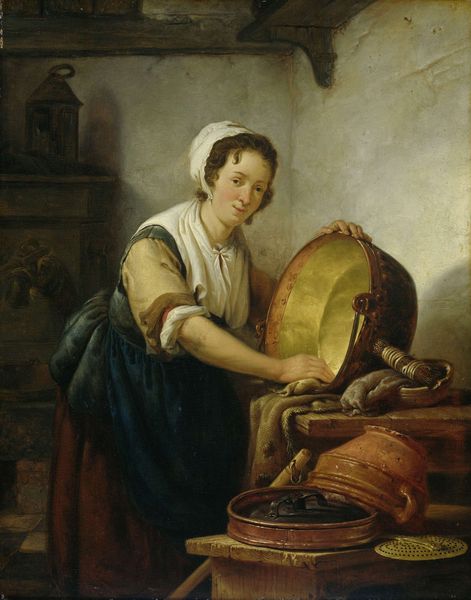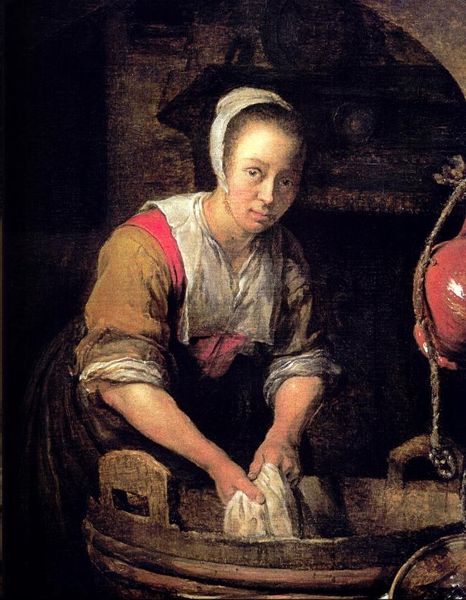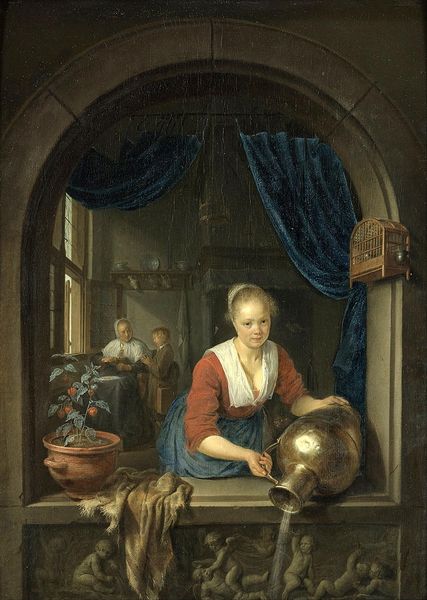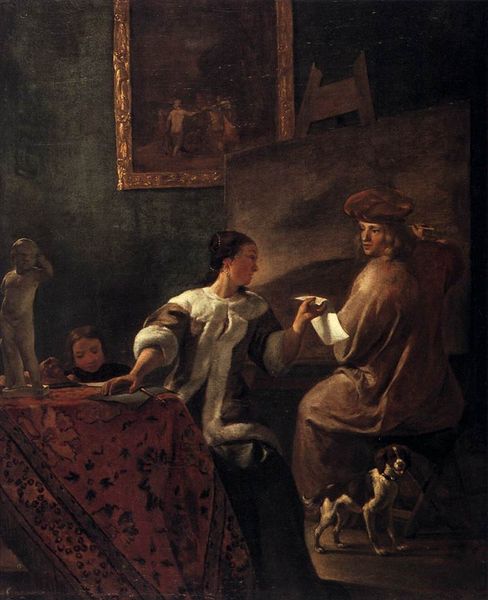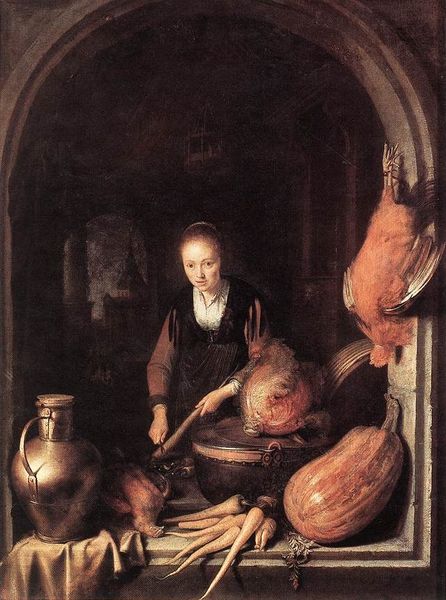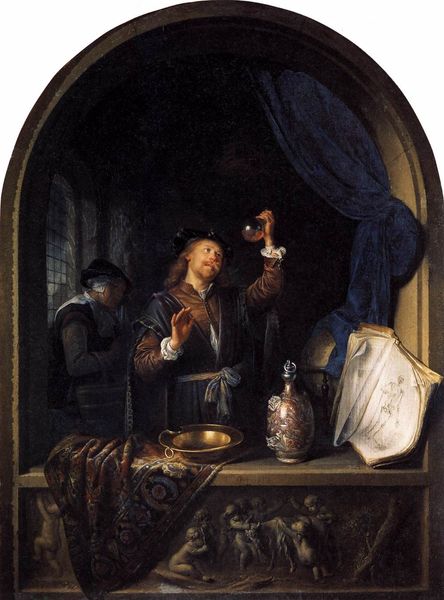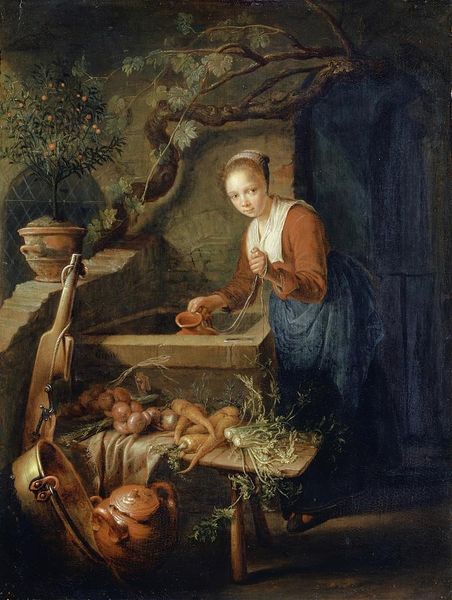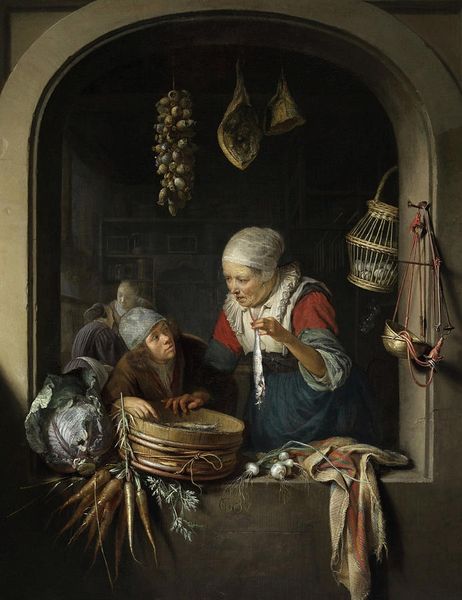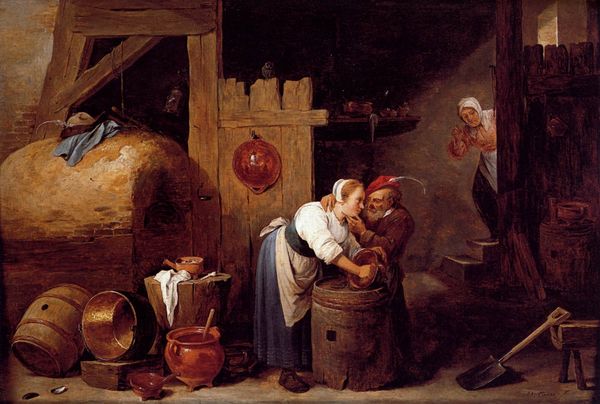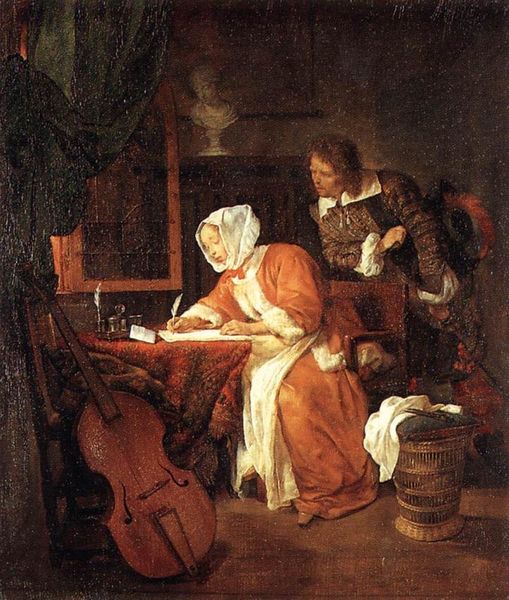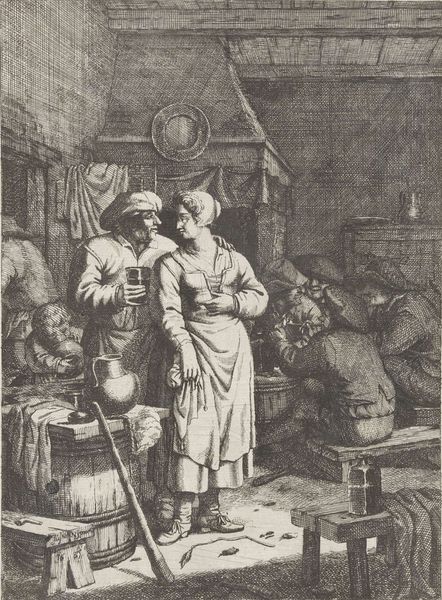
painting, oil-paint
#
portrait
#
dutch-golden-age
#
painting
#
oil-paint
#
oil painting
#
genre-painting
Dimensions: 40 x 33 cm
Copyright: Public domain
Editor: Here we have Gabriel Metsu’s "The Cook," painted in 1667 with oil on canvas. What strikes me is how intimate this kitchen scene feels, yet the woman's gaze is incredibly direct. How do you interpret this work? Curator: This piece gives us an important glimpse into the lives of working-class women in the Dutch Golden Age. Though seemingly straightforward, genre paintings like these often perpetuate and reflect existing social hierarchies. Note her clothing; while clean, it signifies her role within the household. What does her direct gaze suggest to you, considering the power dynamics of the time? Editor: Maybe a sense of defiance, or perhaps acknowledging her own agency, despite her social standing? It feels different than, say, a portrait of a wealthy merchant’s wife. Curator: Precisely! It's a carefully constructed image. Consider also the objects around her – the dead bird, the fish ready to be cooked. These elements might represent the domesticity expected of women. The kitchen itself becomes a stage where her identity is both defined and confined. Editor: That's interesting. I hadn't thought about the kitchen as a stage. Curator: How does seeing the kitchen that way change your interpretation? Consider how we still see similar dynamics at play in contemporary portrayals of women and domestic spaces. Editor: It makes me think about how little some things have changed! Thank you, I hadn’t considered all those aspects before. Curator: And I'm reminded how powerful these seemingly simple paintings can be when viewed through a critical lens, especially in understanding enduring issues around gender and labor.
Comments
No comments
Be the first to comment and join the conversation on the ultimate creative platform.
